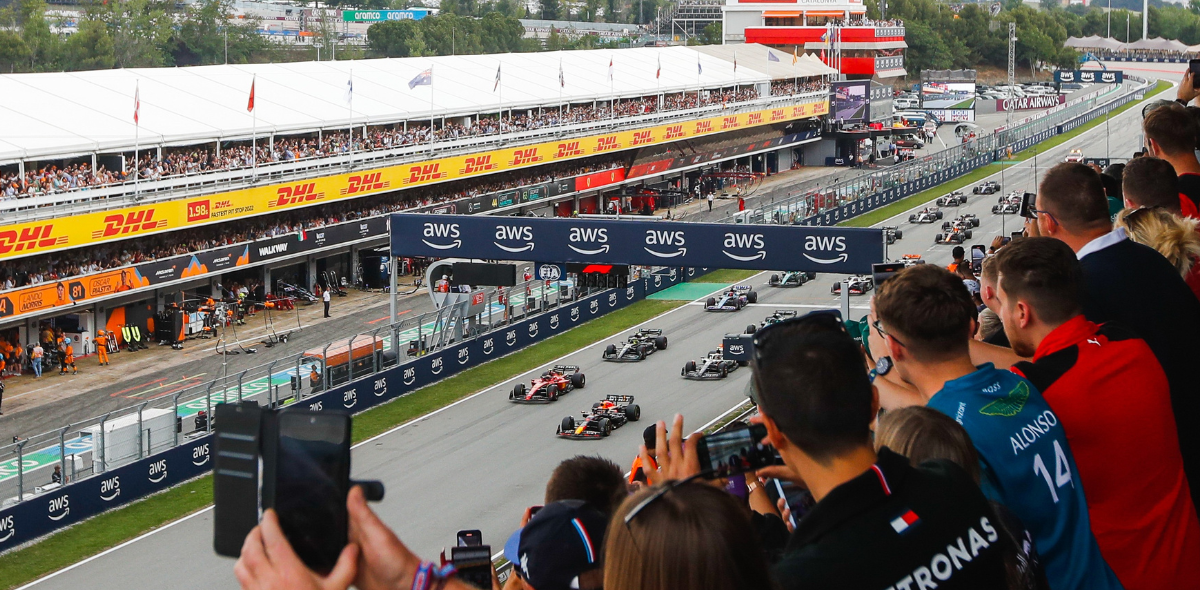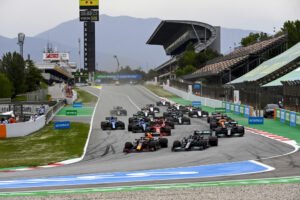The Barcelona Grand Prix is one of the most anticipated races in the European season. Previously the host of Formula 1 pre-season testing, the Circuit de Barcelona-Catalunya is a varied circuit with a wide variety of long-straight, high and low-speed corners, and plenty of racing action.
This makes it the perfect circuit to put the cars through their paces, which is what makes the Barcelona Grand Prix a favourite for the fans.
The circuit is just half an hour from Barcelona’s beaches and June is the perfect month to bask in the glorious Spanish summer sunshine.
But where are the best places to sit at the Circuit de Barcelona-Catalunya? In this handy guide, we take you through the best grandstands to see all the action during the weekend.
🎟️ Buy 2026 Barcelona F1 tickets here
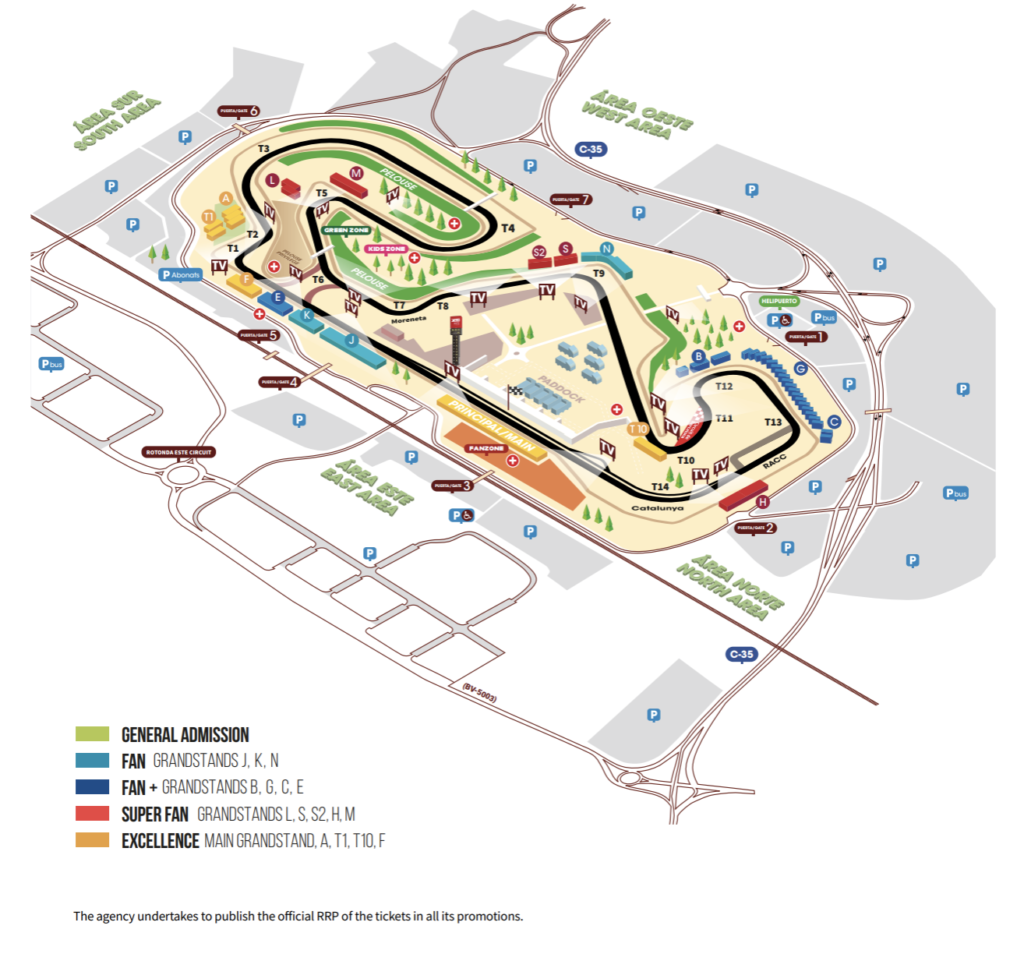
Grandstand guide for the Barcelona Grand Prix
Main Grandstand
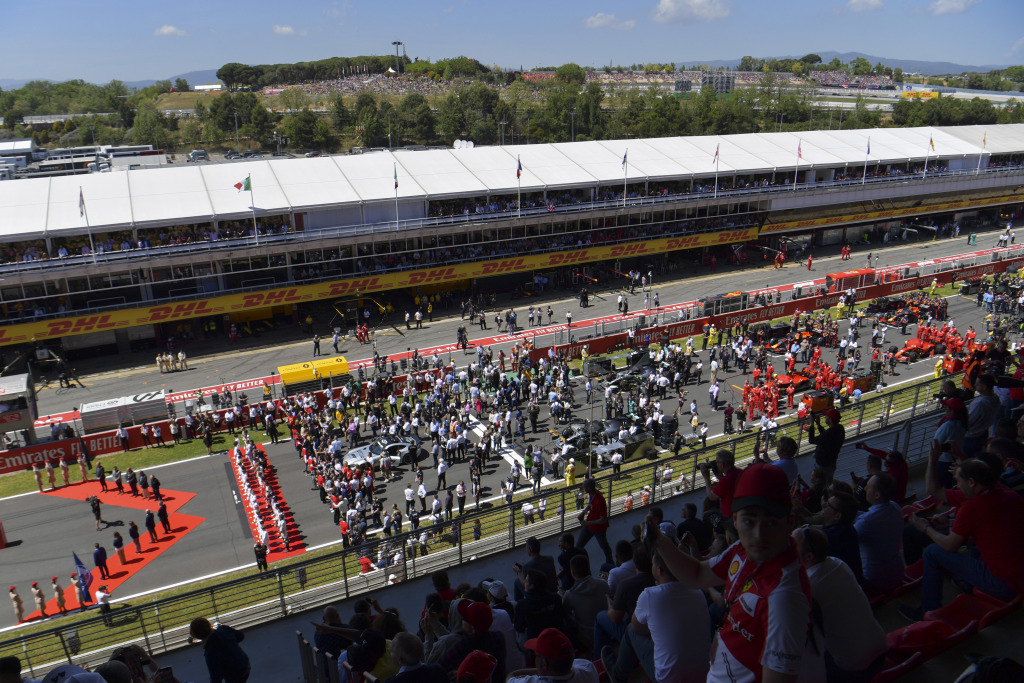
As at any circuit, the main grandstand opposite the pits is one of the best vantage points to watch the race. You get to soak up the atmosphere on the grid pre-race, feel the thrill of 22 Formula 1 cars revving their engines for the start, and keep an eye on what’s going on in the pit lane.
The large grandstand is split into two levels. The high seats give you a great view of the all-important stops. TV screens on either side of the pits keep you abreast of all the action elsewhere on the circuit, but in the main stand, you get a view of one of the race’s iconic features: the tall timing column at the end of the pits. If anyone changes position, you’ll see it first here, and it makes for some brilliant photos during the weekend.
The lower tier gets you as close to an F1 starting grid as possible, where you’ll feel the power of the cars as they take off from the line. Both grandstands are covered, getting you out of the sun during a warm day’s racing.
Grandstand J
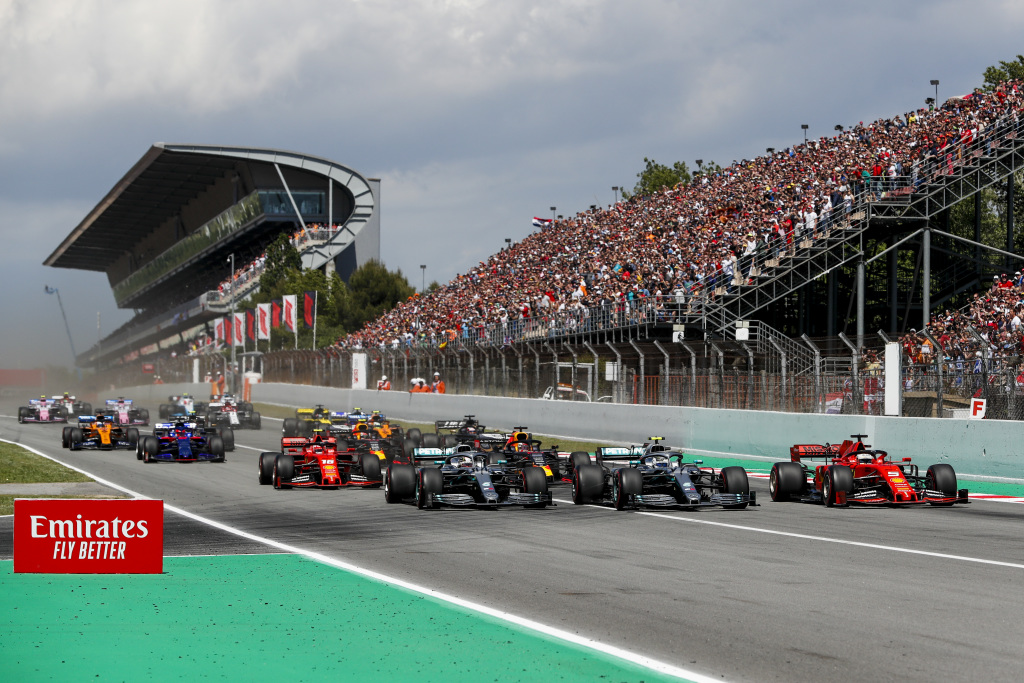
Grandstand J is just along from the main grandstand on the pit straight, right opposite the pit exit. With a view of turn 1, this is the place for the budding strategists to sit, as you’ll see whether the overcut/undercut pit stop strategy gets pulled off.
As for the start of the race, you seat will be just along from the grid, so the cars will be well on their way to 200km/h from a standing start. You’ll see those initial first lap tussles playing out, too, as the race gets underway.
Unlike the main stand, grandstand J is uncovered, so you’ll need to pack accordingly for the summer Spanish heat.
Grandstand K
Grandstand K is located at the end of the main straight, overlooking the heavy braking zone into Turn 1. Cars arrive here at top speed before slamming on the brakes, making this one of the most dramatic overtaking spots on the circuit.
This section has seen plenty of bold late-braking moves and first-lap incidents over the years, particularly when the field is tightly packed. If you want to see decisive passes and drivers pushing the limits under braking, this is a strong choice.
The stand is uncovered, so prepare for exposure to the sun.

Grandstand F
Situated close to the Turn 1 complex, Grandstand F offers views across Turns 1, 2 and 3. From here, you’ll see how the opening corners begin to sort the field, with drivers either defending hard or trying to capitalise on mistakes ahead.
This area regularly produces early-race drama, especially on the opening lap, when cars run side-by-side through the first few corners.
Grandstand A
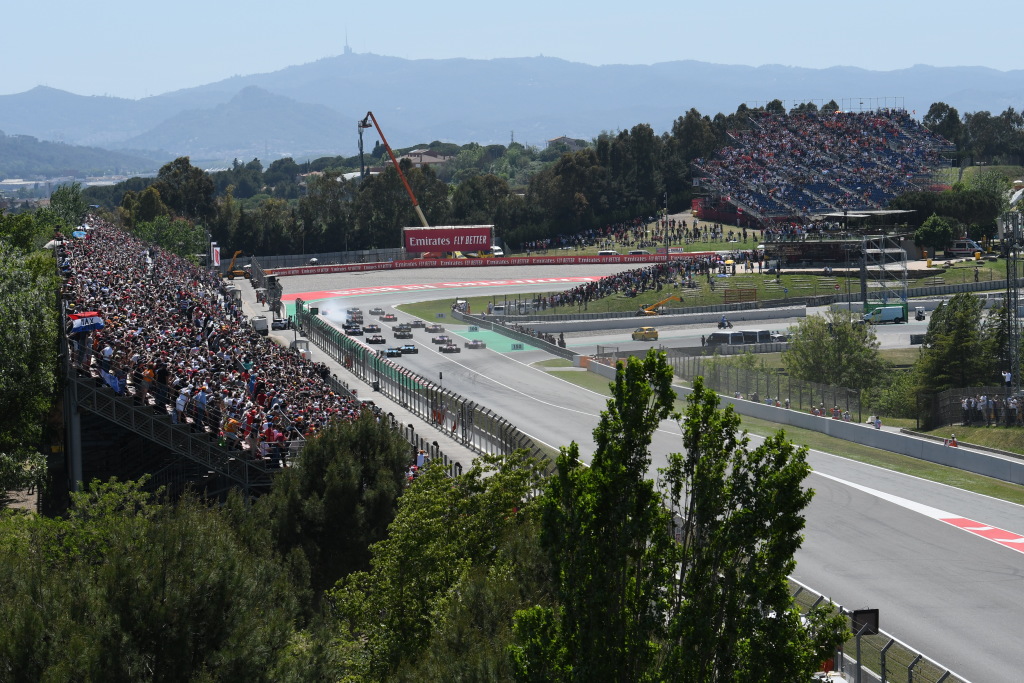
When the cars have made it to the end of the long pit straight, they’re faced with several high-speed S sections. A braking zone into a right-hand turn, before sweeping to the left and back to the right.
Grandstand A is in the unique position of being placed right in the middle of this sweeping section. As a complex that often sees a big squeeze on the first lap, you’re likely to see action here at the start of the race. But as the laps count on, the fast speeds on the straight and braking zone into turn 1 make this a prime overtaking zone, too. This is a covered grandstand.
Grandstand L
Grandstand L is perched on a hillside overlooking the middle sector of the circuit. From your seat, you’ll see cars appear briefly on the main straight before watching them navigate the technical Turns 4, 5 and 6.
It’s a great option if you want to follow multiple parts of the lap at once, and this section often highlights driver skill, as small mistakes here can cost significant lap time.
Grandstand L is uncovered, and higher seats offer the best views.

Grandstand N
Grandstand N is uncovered and looks out over Turns 8 and 9 – one of the fastest and most impressive sections of the circuit. Cars carry huge speed through here, pushing aerodynamic grip to the limit before launching onto the back straight.
This is a fantastic place to appreciate just how fast modern F1 cars are, and how crucial setup is through high-speed corners.
Grandstand T10
Located at Turn 10, this grandstand sits beside one of the circuit’s most reliable overtaking zones. Cars brake heavily here after the back straight, creating opportunities for late lunges and defensive driving.
This corner often comes alive in the second half of the race, when tyre wear and strategy start to play a bigger role.
Grandstand B
Grandstand B is in the stadium section, where the track tightens and the pace slows. From here, you’ll see cars working through a technical sequence that demands precision and patience.
This is a part of the circuit where drivers are often forced into errors under pressure, especially when running close together.
The stand is uncovered and close to fan facilities and amenities.
Grandstand G
Grandstand G is one of the most popular viewing spots at Barcelona, located in the heart of the stadium section. From higher rows, you can see cars navigate several corners in quick succession, as well as the pit lane entry.
There’s almost always something happening here, making it a great choice if you want sustained action rather than brief flashes of speed.

Grandstand C
Also in the stadium section, Grandstand C offers a broad view of the technical final sector. Cars are slightly further away due to the run-off areas, but you gain a clear sense of race flow as drivers manage tyres and positioning.
This is a good spot for fans who enjoy watching the strategic side of racing unfold.
Grandstand H
Grandstand H is a covered stand overlooking the final part of the lap. From here, you’ll see cars exit the stadium section and power towards the final corner before the main straight.
Being covered, Grandstand H offers shade and comfort throughout the weekend.

Grandstand S
Grandstand S provides views of the fast Turns 8 and 9, similar to Grandstand N but from a slightly different angle. This is another excellent place to see cars at full commitment, with very little margin for error.
Strong exits here are key for defending or attacking on the back straight, making this an important part of the lap.
Grandstand M
Grandstand M sits inside the circuit near Turn 5, offering a unique perspective on a technical corner. While overtakes are rare, this is a great place to watch driver technique and car balance.
From higher seats, you may even catch glimpses of action elsewhere on the circuit, adding to the overall viewing experience.
Grandstand E
Grandstand E is positioned near the end of the main straight, with views into the Turn 1 braking zone and the following corners. It’s a versatile option that combines speed, heavy braking and early-lap action.
This area has produced plenty of opening-lap drama over the years, particularly when drivers are tightly bunched.
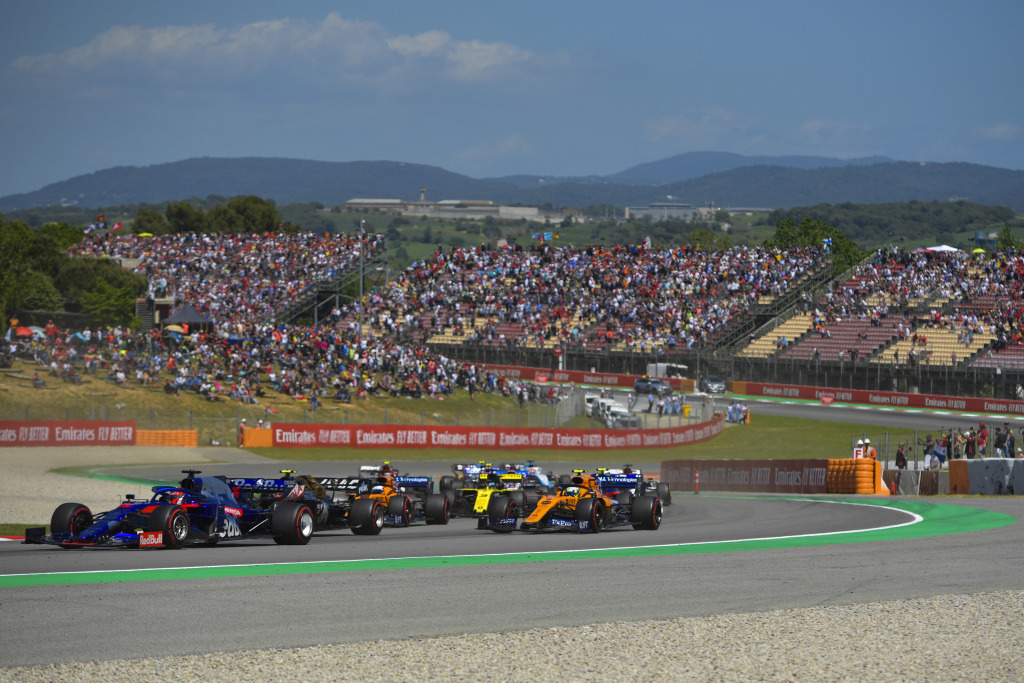
General Admission
General Admission tickets allow you to explore various viewing areas around the circuit, particularly in the southern section. Grassy banks provide elevated views, but space is first-come, first-served.
These areas are known for their lively atmosphere, especially on race day, though arriving early is essential to secure the best spots. Shade is limited, so preparation is key.
Book Barcelona 2026 tickets
Now you know where to sit, it’s time to book your tickets for Barcelona. Visit our event page via the button below to secure your spot, but be quick – tickets won’t last forever!
